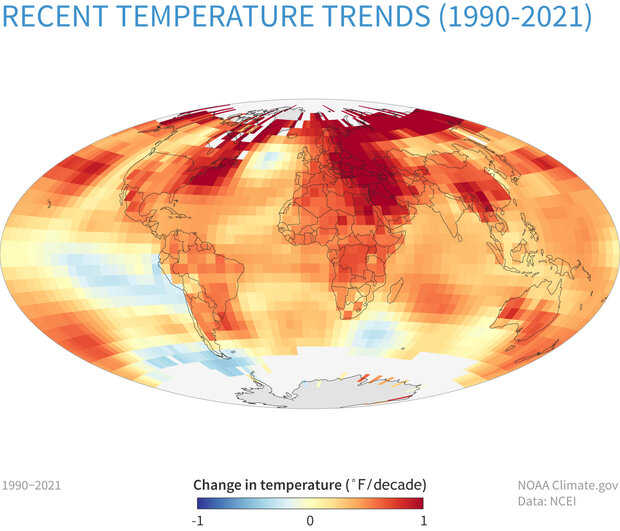If the globe is still warming, then why are some locations not warming while others have experienced cooling?
Global warming means Earth’s annual average air temperature is rising over long time spans (many decades to centuries), but not necessarily in every location and not necessarily in all seasons. It’s like your grades—if you get Bs and Cs in your first semester and in the next semester you get all As and Cs, your overall grade point average rises even though you didn’t improve in every class. Differences in exposure to sunlight, cloud cover, atmospheric circulation patterns, aerosol concentrations, atmospheric humidity, land surface cover, etc., all vary from place to place which, in turn, influence whether and how much a location is warming or cooling. Learn more here, here, here, and here.
Trends in global average surface temperature between 1990 and 2021 in degrees Fahrenheit per decade. Most of the planet is warming (yellow, orange, red). Only a few locations, most of them in Southern Hemisphere oceans, cooled over this time period. NOAA Climate.gov map, based on data from NOAA Centers for Environmental Information.
References
IPCC, 2013: Summary for Policymakers. In: Climate Change 2013: The Physical Science Basis. Contribution of Working Group 1 to the 5th Assessment Report of the Intergovernmental Panel on Climate Change [Stocker, T.F., D. Qin, G.-K. Plattner, M. Tignor, S.K. Allen, J. Boschung, A. Nauels, Y. Xia, V. Bex and P.M. Midgley (eds.)]. Cambridge University Press, Cambridge, United Kingdom and New York, NY, USA.
